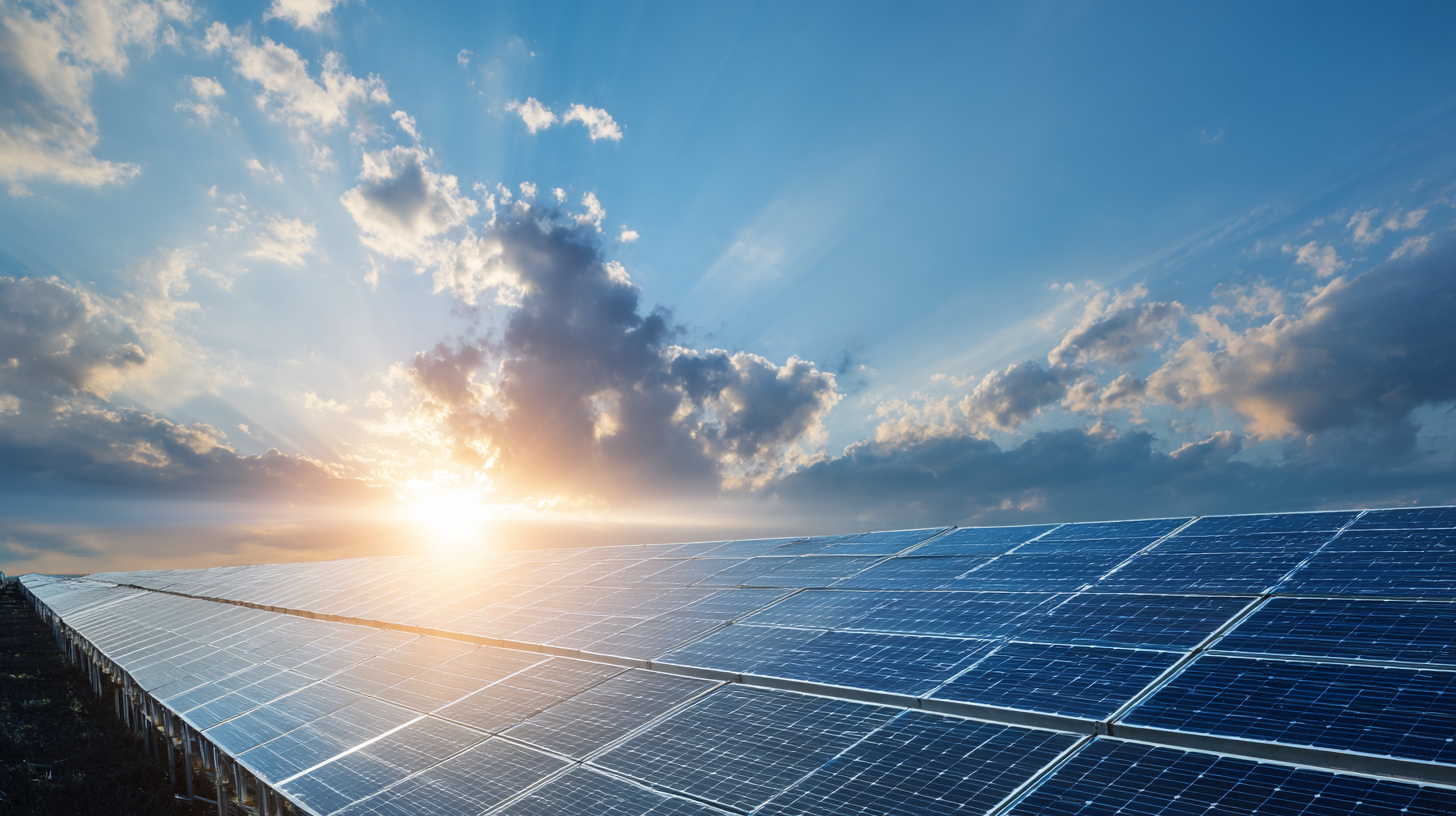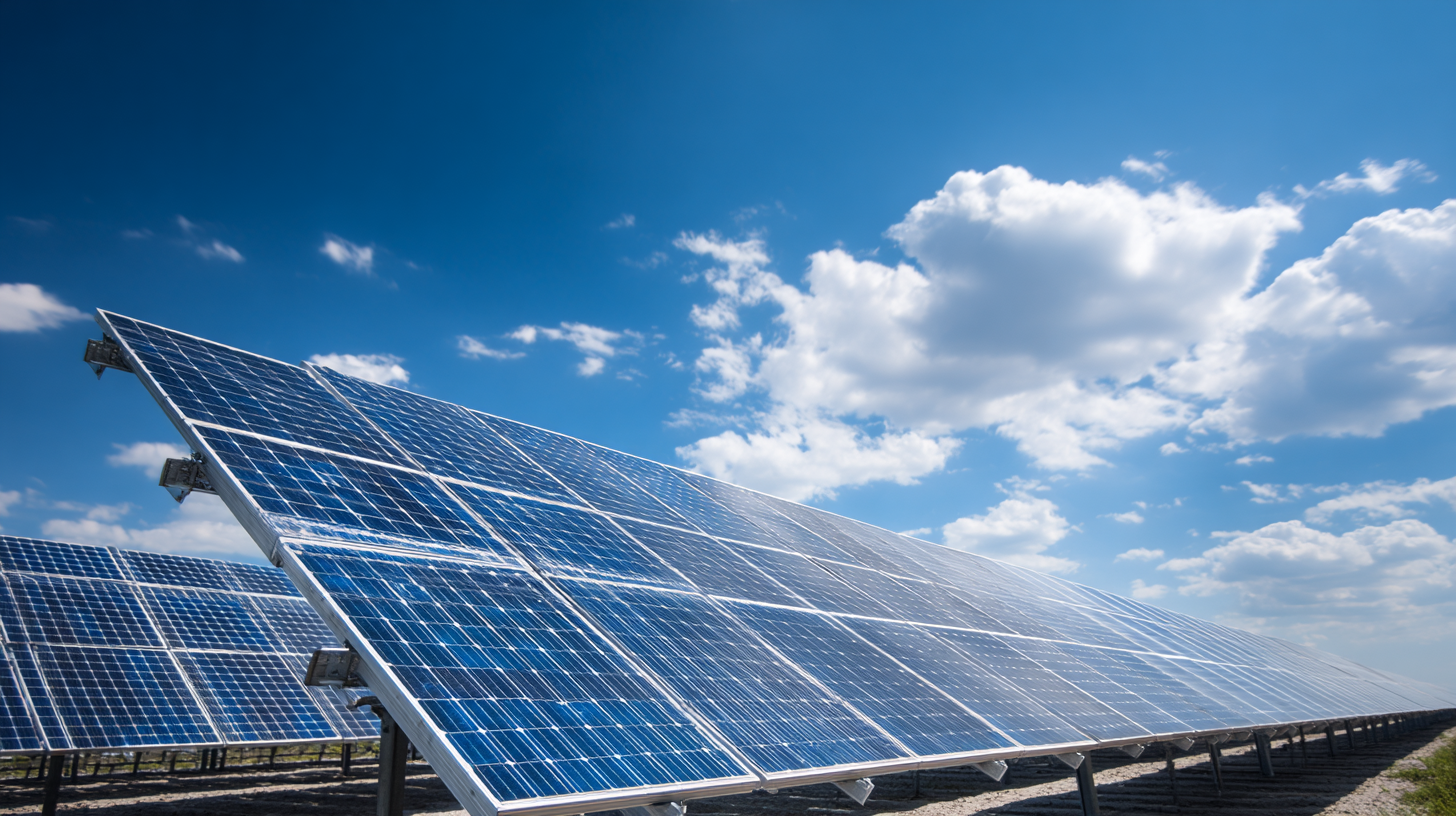Market Predictions for Solar Panel Installation Costs by 2025 Leading the Future of Renewable Energy
As we move towards a more sustainable future, the cost of solar panel installation remains a critical factor in determining the feasibility and attractiveness of renewable energy solutions worldwide. With rapid advancements in technology and increased competition among manufacturers, particularly from companies like "中国优质制造," we can expect significant changes in pricing structures by 2025. This blog will explore market predictions for solar panel installation costs, emphasizing how these shifts could empower consumers and businesses alike to embrace solar energy more readily.

By examining current trends, manufacturing innovations, and potential global partnerships, we aim to provide insights into how the evolving landscape of solar panel pricing can lead the way in making renewable energy not just a viable alternative, but a preferred choice for energy needs in the years to come.
Advantages of After-Sales Service in Solar Panel Installations
The advancement of solar energy technology has made solar panel installations more accessible and efficient. However, the significance of after-sales service cannot be understated. A robust after-sales service provides customers with ongoing support, addressing any operational issues that may arise, and ensuring that their solar systems are performing optimally. This support not only enhances customer satisfaction but also instills confidence in the product, encouraging more homeowners and businesses to invest in renewable energy solutions.
Furthermore, effective after-sales service can lead to long-term cost savings for users. Regular maintenance and timely repairs can prevent minor issues from escalating into costly problems, ultimately extending the lifespan of the solar panels. Companies that prioritize after-sales care often see a boost in their reputation, as satisfied customers share their positive experiences. As solar technology advances and installation costs decrease, the importance of comprehensive after-sales service will continue to grow, making it an essential element in the future of renewable energy.
Understanding Maintenance Costs Over Time for Solar Energy Systems
As solar energy continues to gain traction as a primary source of renewable energy, understanding the long-term maintenance costs is vital for anyone considering solar panel installation. While initial setup costs have dominated conversations, ongoing maintenance constitutes a significant aspect of overall investment in solar energy systems. These systems are relatively low-maintenance compared to traditional energy sources; however, it is essential to factor in periodic expenses such as cleaning, servicing electrical components, and replacing any necessary parts to ensure optimal performance.

Over time, maintenance costs may fluctuate based on several factors, including the location of installation and the type of solar technology used. For instance, areas with high levels of dust or inclement weather may require more frequent cleaning and inspections, ultimately impacting the overall budget for solar energy systems. Understanding these evolving costs can provide a clearer picture for homeowners and businesses, guiding them towards making informed decisions. By prioritizing maintenance as part of the solar energy investment strategy, users can not only enhance system longevity but also maximize the return on their renewable energy investment.
Comparative Analysis: Installation vs. Long-Term Maintenance Expenses
The long-term financial implications of solar panel installation encompass more than just the initial investment; maintenance expenses play a crucial role in the overall cost-effectiveness of renewable energy systems. As technology advances, the efficiency of solar panels has increased significantly, which often translates to lower maintenance requirements. This reduction in upkeep not only enhances the sustainability of solar energy systems but also makes them a more attractive option for homeowners and businesses seeking to reduce their long-term expenses.

In a comparative analysis, the costs associated with installation must be weighed against the ongoing maintenance expenses over the lifespan of the solar panels. While the upfront installation costs may be substantial, they are generally offset by minimal maintenance needs, particularly for newer panel models. Factors such as performance warranties and the decreasing prices of replacement parts further contribute to the long-term financial advantages of solar energy.
As we look towards 2025, understanding these dynamics will be essential for consumers and investors, highlighting the necessity to evaluate not just the immediate costs but also the extended benefits that solar panel systems can offer over time.
Case Studies of Successful After-Sales Support in Solar Projects
As the solar energy industry continues to expand, after-sales support has emerged as a critical component in ensuring the success of
solar projects. Companies that excel in providing top-notch customer service and
technical assistance not only enhance customer satisfaction but also foster long-term relationships that can lead to repeat business.
For instance, one leading solar provider implemented a robust after-sales program that included
regular follow-ups, system performance monitoring, and maintenance services. This proactive approach not
only improved client retention but also significantly increased the number of referrals generated through satisfied customers.
Another compelling case study involves a solar firm that adopted a hands-on training program for
their clients post-installation. By empowering users with knowledge about their solar systems, including troubleshooting techniques
and performance optimization strategies, the company saw a marked reduction in support tickets and an increase in the overall
efficiency of the systems. Such innovative after-sales strategies underline the importance of customer engagement in the renewable
energy sector, paving the way for sustainable growth and enhancing the reputation of solar energy as a viable alternative.
Future Trends: Innovations in After-Sales Service for Renewables
The renewable energy sector is rapidly evolving, with innovative after-sales services becoming crucial for the sustainability of solar panel installations. According to recent industry analysis, the global industrial distribution market is projected to experience a compound annual growth rate (CAGR) of 4.5% from 2023 to 2027. This growth is largely driven by increasing demand across various sectors, including manufacturing, healthcare, and renewable energy. As solar panel installations rise, companies are recognizing the importance of enhancing customer experience through robust after-sales service, which can mitigate operational challenges and foster long-term relationships.
Tips: Investing in advanced training for service technicians can significantly improve response times and customer satisfaction rates. Consider implementing a customer feedback system to continuously refine your service offerings and adapt to evolving customer needs. Emphasizing maintenance and support as integral parts of the solar installation process can attract more clients who value reliability.
Moreover, energy firms are leveraging digital tools to streamline after-sales support. Reports indicate that integrating IoT technology can enhance the monitoring and predictive maintenance of solar installations. This proactive approach not only reduces downtime but also optimizes energy output, ultimately contributing to the overall efficiency of renewable energy systems. As companies adapt to these trends, they position themselves favorably in a competitive market, ensuring their services align with the future of renewable energy innovations.
Market Predictions for Solar Panel Installation Costs by 2025 Leading the Future of Renewable Energy
| Year | Average Installation Cost ($/Watt) | Market Growth Rate (%) | After-Sales Service Innovations | Expected Consumer Satisfaction (%) |
|---|---|---|---|---|
| 2023 | 2.80 | 15 | Enhanced Online Support | 85 |
| 2024 | 2.60 | 18 | Predictive Maintenance Services | 90 |
| 2025 | 2.30 | 20 | 24/7 Customer Care | 92 |